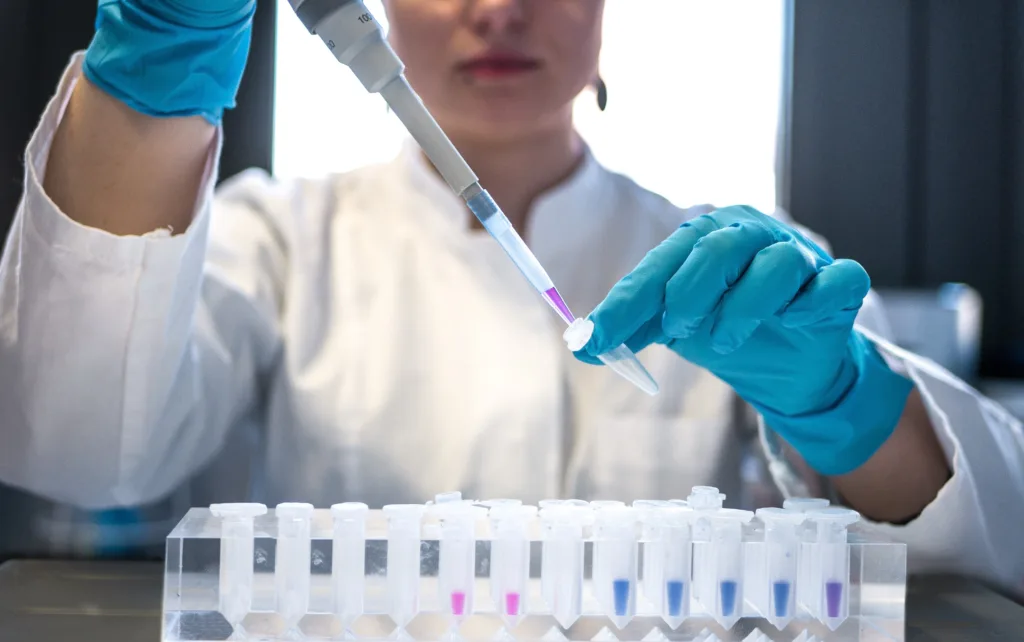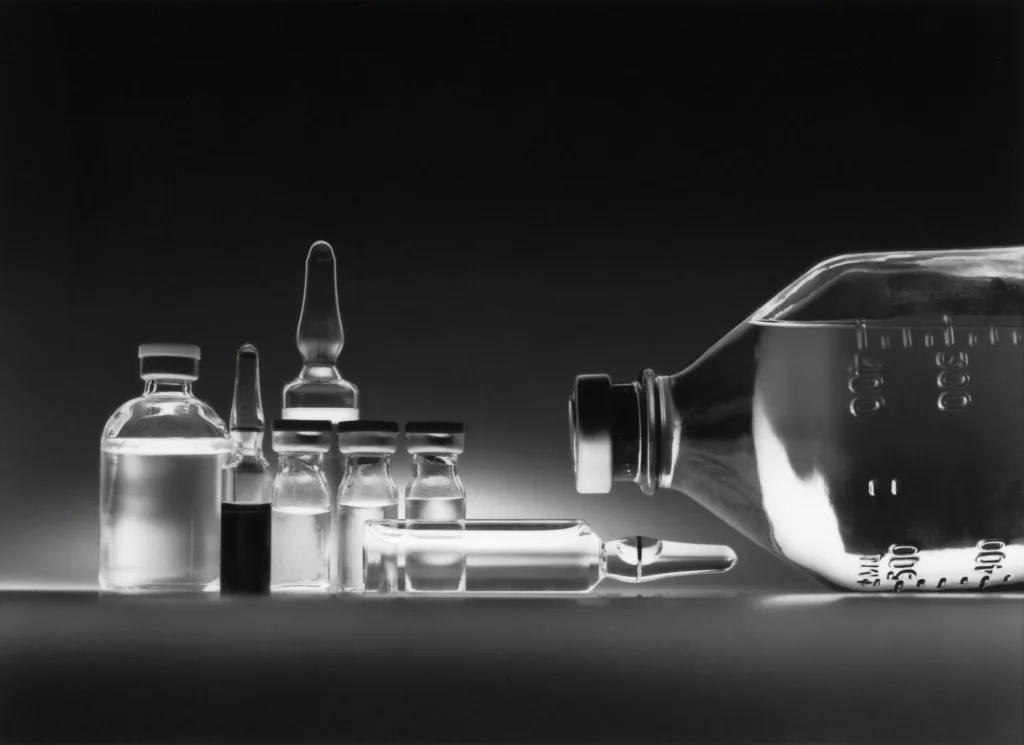Milligrams are a unit of measurement commonly used to measure small amounts of weight. In the metric system, a milligram is equal to one thousandth of a gram or 0.001 gram. The word “milli” in milligram indicates that it is one thousandth of a whole.
To put it into perspective, a common mosquito weighs around 2 milligrams. This small weight measurement allows scientists and researchers to accurately measure and quantify substances in various fields, such as medicine, chemistry, and biology.
In the imperial system (used in the United States), there are more than 28,000 milligrams in a single ounce. This shows that milligrams are a very small unit of weight.
It is important to note that milligrams are often used to measure the weight of medications. Many prescription and over-the-counter drugs are measured in milligrams to ensure precise dosages. For example, a doctor may prescribe a medication in 10 milligram doses. This means that each pill or tablet contains 10 milligrams of the active ingredient.
Milligrams are also commonly used to measure the weight of vitamins and supplements. The recommended daily intake of certain vitamins, such as vitamin C or vitamin D, may be listed in milligrams. This allows consumers to accurately follow the recommended dosage.
In addition to weight, milligrams are also used to measure volume in certain situations. For example, milligrams per liter (mg/L) is a unit often used to measure the concentration of substances in water or other liquids. This allows scientists and environmentalists to monitor the levels of pollutants or chemicals in a given sample.
It is important to understand the relationship between milligrams and other units of measurement. As mentioned earlier, there are 1,000 milligrams in a gram. Similarly, there are 1,000 micrograms in a milligram. This shows how milligrams fit into the larger metric system of measurement.
To convert between milligrams and other units, you can use conversion factors. For example, to convert milligrams to grams, you divide the number of milligrams by 1,000. To convert milligrams to micrograms, you multiply the number of milligrams by 1,000.
Milligrams are a unit of measurement used to measure small amounts of weight. They are commonly used in the medical field to measure medication dosages and in various scientific disciplines to quantify substances. Understanding milligrams and their relationship to other units of measurement is important for accurate and precise measurements.
What Is An Example Of Milligram?
One example of a milligram is the weight of a common mosquito, which is approximately 2 milligrams. Another example is in the imperial (US) measurement system, where there are more than 28,000 milligrams in a single ounce. To give you a better idea, here is a breakdown:
– A common mosquito weighs around 2 milligrams.
– In the imperial (US) measurement system, there are more than 28,000 milligrams in an ounce.
I hope this provides a clear understanding of what a milligram is and some examples to illustrate its measurement.

What Makes Up 1 Milligram?
One milligram is a unit of measurement that represents a very small amount of mass. It is equivalent to one thousandth of a gram or one thousand micrograms. To put it into perspective, here are some examples of what makes up 1 milligram:
– One small grain of salt weighs approximately 0.1 milligrams.
– A single strand of human hair weighs around 50 milligrams, so 1 milligram is just a fraction of that.
– The weight of a typical mosquito is about 2.5 milligrams, meaning that 1 milligram is less than half the weight of a mosquito.
– A single drop of water is roughly 50 milligrams, so 1 milligram would be an extremely tiny fraction of that drop.
1 milligram is an incredibly small unit of measurement, representing one thousandth of a gram or one thousand micrograms. It is helpful to understand these comparisons to visualize just how minuscule 1 milligram is in everyday objects.
What Size Is A Milligram?
A milligram is a unit of measurement commonly used in the field of science and medicine. It is a very small unit of weight or mass, representing one thousandth of a gram. To put it in perspective, a milligram is equal to 0.001 grams.
To further understand the size of a milligram, here are some comparisons:
– A single grain of sand weighs around 10 milligrams.
– A standard paperclip weighs approximately 1 milligram.
– A small paperclip or a single eyelash may weigh about 0.1 milligrams.
– A speck of dust or a grain of salt could weigh around 0.01 milligrams.
A milligram is an extremely small unit of measurement, representing one thousandth of a gram. It is commonly used in scientific and medical contexts to measure very small amounts of weight or mass.
What Is A Milligram Used For?
A milligram (mg) is a unit of measurement used to quantify the weight or mass of an object or substance. It is equal to one thousandth of a gram (g). Milligrams are commonly used to measure the dosage of medications or supplements. They are also used in scientific research and laboratory experiments to measure the weight of various substances.
Here are some specific uses of milligrams:
1. Medications: Milligrams are frequently used to determine the dosage of prescription and over-the-counter medications. The dosage instructions on medication labels often specify the number of milligrams to be taken per dose. This helps ensure accurate and safe administration of the medication.
2. Supplements and Vitamins: Many dietary supplements and vitamins are measured in milligrams. For example, vitamin C supplements may come in 500 mg or 1000 mg tablets. The milligram measurement allows for precise dosing and helps individuals meet their nutritional needs.
3. Chemistry and Laboratory Experiments: In the field of chemistry, milligrams are used to measure the weight of various substances. This is particularly important when preparing solutions or conducting experiments that require precise measurements. By using milligrams, scientists can accurately calculate the concentration of a substance in a solution or determine the amount of a particular element or compound.
4. Analytical Testing: In analytical testing, such as drug testing or environmental analysis, milligrams are used to measure the quantity of a substance present in a sample. This can help identify the presence of certain compounds or determine the concentration of a substance in a given sample.
5. Food and Nutrition: Some food products may provide nutritional information in milligrams, particularly for nutrients such as sodium, cholesterol, or fiber. This allows individuals to track their nutrient intake and make informed dietary choices.
It is important to note that milligrams are just one unit of measurement and are often used in conjunction with other units, such as grams or liters. Understanding the appropriate unit of measurement for a specific application is crucial to ensure accurate measurements and calculations.

Conclusion
Milligrams are a unit of measurement used to quantify small amounts of weight. Specifically, one milligram is equal to one thousandth of a gram or 0.001 gram. To put it into perspective, a common mosquito weighs around 2 milligrams. In imperial (US) measurements, there are over 28,000 milligrams in a single ounce. The term “milli” signifies one thousandth, indicating that a milligram is a very small unit of weight. It is important to note that milligrams are different from millilitres, which measure volume in liquid. In the metric system, there are 1,000 milligrams in a gram and 1,000 millilitres in a litre of liquid. Understanding the concept of milligrams is crucial in various fields such as medicine, chemistry, and nutrition, where precise measurements are essential.
